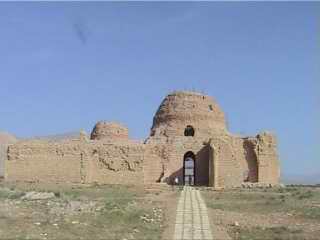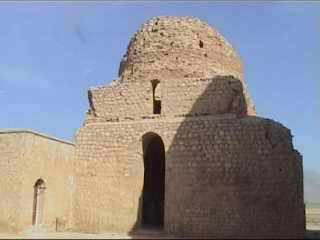|
Sarvestan
Sarvestan () is a city in the Central District of Sarvestan County, Fars province, Iran, serving as capital of both the county and the district. The city is southeast of Shiraz, the capital of Fars province. Many tropical and sub-tropical plants are grown in Sarvestan (i.e. Wheat, Pistachios, Olive). The yoghurt of Sarvestan is very famous. History Sarvestan's history goes back some 2600 years when the Achaemenids established the Persian Empire. The Sassanid The Sasanian Empire (), officially Eranshahr ( , "Empire of the Iranian peoples, Iranians"), was an List of monarchs of Iran, Iranian empire that was founded and ruled by the House of Sasan from 224 to 651. Enduring for over four centuries, th ... monument of Sasanids' Palace (Kakhe Sasan) is located in south east of the city 90 km from Shiraz, experts believe the monument was constructed during the Sasanid dynastic era (224-651 A.D), and it was either a governing palace or a Zoroastrian temple, pr ... [...More Info...] [...Related Items...] OR: [Wikipedia] [Google] [Baidu] |
Sarvestan County
Sarvestan County () is in Fars province, Iran. Its capital is the city of Sarvestan Sarvestan () is a city in the Central District of Sarvestan County, Fars province, Iran, serving as capital of both the county and the district. The city is southeast of Shiraz, the capital of Fars province. Many tropical and sub-trop .... History After the 2006 National Census, Sarvestan District was separated from Shiraz County in the establishment of Sarvestan County, which was divided into two districts of two rural districts each, with Sarvestan as its capital. Demographics Population At the time of the 2011 census, the county's population was 40,531 people in 10,579 households. The 2016 census measured the population of the county as 38,114 in 11,653 households. Administrative divisions Sarvestan County's population history and administrative structure over two consecutive censuses are shown in the following table. See also References Sarvestan County ... [...More Info...] [...Related Items...] OR: [Wikipedia] [Google] [Baidu] |
Central District (Sarvestan County)
The Central District of Sarvestan County () is in Fars province, Iran. Its capital is the city of Sarvestan. History After the 2006 National Census, Sarvestan District was separated from Shiraz County Shiraz County () is in Fars province, Iran. Its capital is the city of Shiraz. History After the 2006 National Census, Kavar District was separated from the county in the establishment of Kavar County; Korbal District to establish Khar ... in the establishment of Sarvestan County, which was divided into two districts of two rural districts each, with Sarvestan as its capital. Demographics Population At the time of the 2011 census, the district's population was 27,438 people in 7,155 households. The 2016 census measured the population of the district as 26,546 inhabitants in 8,124 households. Administrative divisions See also References Districts of Fars province Populated places in Sarvestan County {{Sarvestan-geo-stub ... [...More Info...] [...Related Items...] OR: [Wikipedia] [Google] [Baidu] |
Sarvestan District
Sarvestan District () is a former administrative division of Shiraz County, Fars province, Iran. Its capital was the city of Sarvestan. History After the 2006 National Census, the district was separated from the county in the establishment of Sarvestan County Sarvestan County () is in Fars province, Iran. Its capital is the city of Sarvestan Sarvestan () is a city in the Central District of Sarvestan County, Fars province, Iran, serving as capital of both the county and the district. .... Demographics Population At the time of the 2006 census, the district's population was 34,452 in 8,308 households. Administrative divisions See also References Former populated places in Fars province {{Shiraz-geo-stub fa:شهرستان سروستان ... [...More Info...] [...Related Items...] OR: [Wikipedia] [Google] [Baidu] |
Sarvestan Palace
The Sassanid Palace of Sarvestan () is a Sassanid-era building in the Iranian city of Sarvestan, some 90 km southeast from the city of Shiraz. The palace was built in the 5th century AD, and was either a gubernatorial residence or a Zoroastrian fire temple. History The Sarvestan Palace was built by the Sasanian king Bahramgur (; r. 420–438) and dominates an immense, empty plain. The name "palace" is considered misleading, because the monument's function is obscure. It may have been a hunting lodge or a sanctuary instead of a palace, because of the presence of a small building, just north of the palace, whose function remains unknown. Palace court A visitor who would have arrived from the south, would have seen three iwans. After entering the central one, he would have reached a large square hall under a large dome, made of baked brick. After this, a visitor would have found himself on a rectangular courtyard, surrounded by the residential quarters. The building remind ... [...More Info...] [...Related Items...] OR: [Wikipedia] [Google] [Baidu] |
Tomb Of Sheikh Yoosof Sarvestani
The Tomb of Sheikh Yusof Sarvestani () is a tomb complex composed of a decorative edifice erected in honour of Sheikh Yusof Sarvestani, astronomer, calligrapher and Philosopher located in Sarvestan, Fars province. It was built in the early 1314 AD during the Ilkhanate and uses mainly elements of Islamic architecture. The construction of the mausoleum as well as its aesthetic design is a reflection of the cultural, and geo-political status of Iran at the time. Gallery See also * Sheikh Yusof Sarvestani * Islamic architecture Islamic architecture comprises the architectural styles of buildings associated with Islam. It encompasses both Secularity, secular and religious styles from the early history of Islam to the present day. The Muslim world, Islamic world encompasse ... External links Shiraz Municipality Website article about the architecture of the tomb and its influences References {{Iran topics Sarvestan Sheikh Yusof Sarvestani Buildings and structures in Fars ... [...More Info...] [...Related Items...] OR: [Wikipedia] [Google] [Baidu] |
Shiraz County
Shiraz County () is in Fars province, Iran. Its capital is the city of Shiraz. History After the 2006 National Census, Kavar District was separated from the county in the establishment of Kavar County; Korbal District to establish Kharameh County; and Sarvestan District in establishing Sarvestan County. The villages of Khaneh Zenyan and Sadra were elevated to city status. After the 2016 census, Zarqan District was separated from the county in the establishment of Zarqan County Zarqan County () is in Fars province, Fars province, Iran. Its capital is the city of Zarqan, whose population at the time of the 2016 National Census was 32,261 in 9,591 households. History In 2018, Zarqan District was separated from Shira .... Additionally, Siyakh Darengun Rural District was separated from the Central District in the formation of Siyakh Darengun District, including the new Darengun Rural District. In 2024, Darian Rural District and the city of Darian were sep ... [...More Info...] [...Related Items...] OR: [Wikipedia] [Google] [Baidu] |
Fars Province
Fars Province or Pars Province, also known as Persis or Farsistan (فارسستان), is one of the 31 provinces of Iran. Its capital is the city of Shiraz. Pars province has an area of 122,400 km2 and is located in Iran's southwest, in Regions of Iran, Region 2. It neighbours the provinces of Bushehr province, Bushehr to the west, Hormozgan province, Hormozgan to the south, Kerman province, Kerman and Yazd province, Yazd to the east, Isfahan province, Isfahan to the north, and Kohgiluyeh and Boyer-Ahmad Province, Kohgiluyeh and Boyer-Ahmad to the northwest. Etymology The Persian language, Persian word Pa''rs'' (), derived from the earlier form ''Pârs'' (), which is in turn derived from ' (), the Old Persian name for the Persis region. The names ''Parsa'' and ''Persia'' originate from this region. Pars is the historical homeland of the Persian people. It was the homeland of the Achaemenid Empire, Achaemenid and Sasanian Empire, Sasanian Persian dynasties of Iran, who ... [...More Info...] [...Related Items...] OR: [Wikipedia] [Google] [Baidu] |
Shiraz
Shiraz (; ) is the List of largest cities of Iran, fifth-most-populous city of Iran and the capital of Fars province, which has been historically known as Pars (Sasanian province), Pars () and Persis. As of the 2016 national census, the population of the city was 1,565,572 people, and its built-up area with Sadra, Fars, Sadra was home to almost 1,800,000 inhabitants. A census in 2021 showed an increase in the city's population to 1,995,500 people. Shiraz is located in Southern Iran, southwestern Iran on the () seasonal river. Founded in the early Islamic period, the city has a moderate climate and has been a regional trade center for over a thousand years. The earliest reference to the city, as ''Tiraziš'', is on Elamite clay tablets dated to 2000 BCE. The modern city was founded by the Sasanian dynasty and restored by the Umayyad Caliphate in 693 CE and grew prominent under the successive Iranian peoples, Iranian Saffarid dynasty, Saffarid and Buyid dynasty, Buyid dynastie ... [...More Info...] [...Related Items...] OR: [Wikipedia] [Google] [Baidu] |
Shiraz, Iran
Shiraz (; ) is the fifth-most-populous city of Iran and the capital of Fars province, which has been historically known as Pars () and Persis. As of the 2016 national census, the population of the city was 1,565,572 people, and its built-up area with Sadra was home to almost 1,800,000 inhabitants. A census in 2021 showed an increase in the city's population to 1,995,500 people. Shiraz is located in southwestern Iran on the () seasonal river. Founded in the early Islamic period, the city has a moderate climate and has been a regional trade center for over a thousand years. The earliest reference to the city, as ''Tiraziš'', is on Elamite clay tablets dated to 2000 BCE. The modern city was founded by the Sasanian dynasty and restored by the Umayyad Caliphate in 693 CE and grew prominent under the successive Iranian Saffarid and Buyid dynasties in the 9th and 10th–11th centuries, respectively. In the 13th century, Shiraz became a leading center of the arts and letters, ... [...More Info...] [...Related Items...] OR: [Wikipedia] [Google] [Baidu] |
Counties Of Iran
Iran's counties (, Romanization, romanized as ''šahrestân'') are administrative divisions of larger Provinces of Iran, provinces (''ostan''). The word ''shahrestan'' comes from the Persian words ' (city) and ' ("place, land"). "County", therefore, is a near equivalent to (šahrestân). Counties are divided into one or more districts ( ). A typical district includes both cities ( ) and rural districts ( ), which are groupings of adjacent villages. One city within the county serves as the capital of that county, generally in its Central District. Each county is governed by an office known as ''farmândâri'', which coordinates different public events and agencies and is headed by a ''farmândâr'', the governor of the county and the highest-ranking official in the division. Among the provinces of Iran, Fars province, Fars has the highest number of ''shahrestans'' (37), while Qom province, Qom has the fewest (3). In 2005 Iran had 324 ''shahrestans'', while in as of now there ... [...More Info...] [...Related Items...] OR: [Wikipedia] [Google] [Baidu] |
Persian People
Persians ( ), or the Persian people (), are an Iranian peoples, Iranian ethnic group from West Asia that came from an earlier group called the Proto-Iranians, which likely split from the Indo-Iranians in 1800 BCE from either Afghanistan or Central Asia. They are indigenous to the Iranian plateau and comprise the majority of the population of Iran.Iran Census Results 2016 United Nations Alongside having a Culture of Iran, common cultural system, they are native speakers of the Persian language and of the Western Iranian languages that are closely related to it. In the Western world, "Persian" was largely understood as a demonym for all Iranians rather than as an ethnonym for the Persian people, but this understanding Name of Iran, shi ... [...More Info...] [...Related Items...] OR: [Wikipedia] [Google] [Baidu] |





